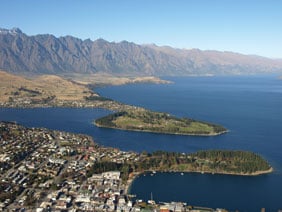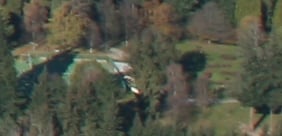Olympus E-410
-
-
Written by Gordon Laing
Outdoor scene - Olympus E-410 vs Canon 400D / XTi with kit lenses
Olympus E-410 results continued…
Outdoor / Resolution / Noise / Noise 2
 |
To compare real-life performance we shot the same scene with the Olympus E-410 and Canon 400D / XTi within a few moments of each other using their best quality JPEG settings and lowest ISO sensitivities. To reflect typical usage, each camera was fitted with its most common kit lens option, respectively: the Olympus Zuiko Digital 14-42mm ED and Canon EF-S 18-55mm. The Canon captures wider 3:2 aspect ratio images, but each lens was adjusted to capture an identical vertical field of view. The image left was taken with the Olympus E-410 at 21mm f8, with a sensitivity of 100 ISO; the original SHQ JPEG measured 7.09MB; the Canon 400D / XTi image measured 4.10MB. |
Note: we are aware of reports concerning underexposure issues affecting certain Olympus E-410 evaluation samples, but ours came from a different source and did not exhibit these issues. The images here and throughout the review did not employ compensation. Interestingly though, the Canon 400D / XTi continued its habit of underexposure, and despite running the latest 1.0.5 firmware we had to apply +2/3 EV of compensation to better match the E-410’s results here. The crops are taken from the upper left, centre and lower right portions of the originals and presented here at 100%. The E-410 crops show a slightly smaller area because it has a higher vertical resolution than the 400D / XTi. In terms of actual resolvable detail, the two sets of results are quite close, although the E-410 samples show slightly greater contrast, due at least partly to its Default Vivid picture mode. The E-410’s kit lens is superior to the Canon EF-S 18-55mm though and this has given it a boost in the corner areas which look a little soft on the Canon – and this is all the more impressive given the corner areas shown in the first and third rows below are further from the extremes on the Canon image, due to its 3:2 aspect ratio capturing a wider area. So if anything, the Canon should have the advantage by avoiding the weakest parts of its lens in the crops below. |
Olympus E-410 Using ZD 14-42mm |
Canon 400D / XTi Using EF-S 18-55mm | |
 |  | |
1/200, f8, 100 ISO |
1/200, f8, 100 ISO | |
 |  | |
1/200, f8, 100 ISO |
1/200, f8, 100 ISO | |
 |  | |
1/200, f8, 100 ISO |
1/200, f8, 100 ISO |
Olympus E-410 JPEG versus RAW comparison
To evaluate the effect of the E-410’s in-camera processing and compression, we recorded a best-quality SHQ JPEG followed by a RAW version of the same scene immediately afterwards. The JPEG and RAW files measured 7.11MB and 10.1MB respectively. At the time of writing, neither Adobe Lightroom nor Camera RAW supported the E-410’s RAW files, so we converted them using the supplied Olympus Master 2.02 software. We used the default settings and exported the image as a 16-bit TIFF, before opening in Photoshop CS2, converting to 8-bit then cropping and saving using the same JPEG settings as above. |
Olympus E-410 JPEG versus RAW, using ZD 14-42mm | ||
 |  | |
JPEG, 1/200, f8, 100 ISO |
RAW conversion, 1/200, f8, 100 ISO | |
|




